Shade
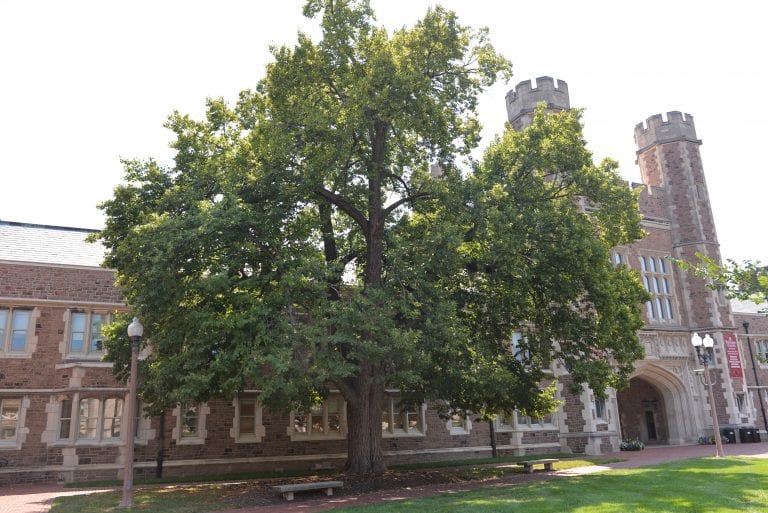
American Basswood (removed July 2023)
Arbor Walk #17, Treekeeper ID #1937
This is one of the oldest and largest trees on campus. It has large green leaves and small, sweetly scented flowers. Recently, efforts have been taken to preserve and continue on the genetic lineage of this tree whose history follows that of WashU's Danforth Campus.
American Chestnut
Arbor Walk #111, Treekeeper ID #6353
The American Chestnut is a historically and cuturally important tree that unfortunately has a sad story. This species used to be one of the biggest and most numerous trees in the Eastern United States, but it is now considered functionally extinct.
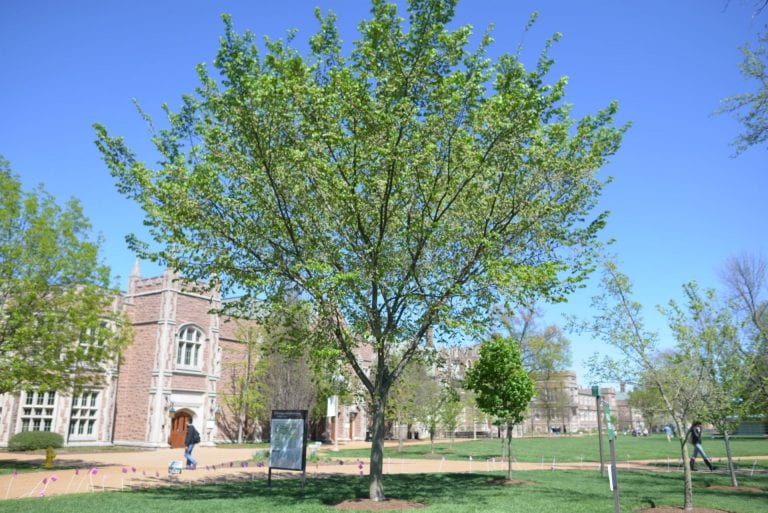
American Elm
Arbor Walk #31, Treekeeper ID #2408
The American Elm is native to much of Eastern North America and grows in low, moist areas and along streams across the state of Missouri.
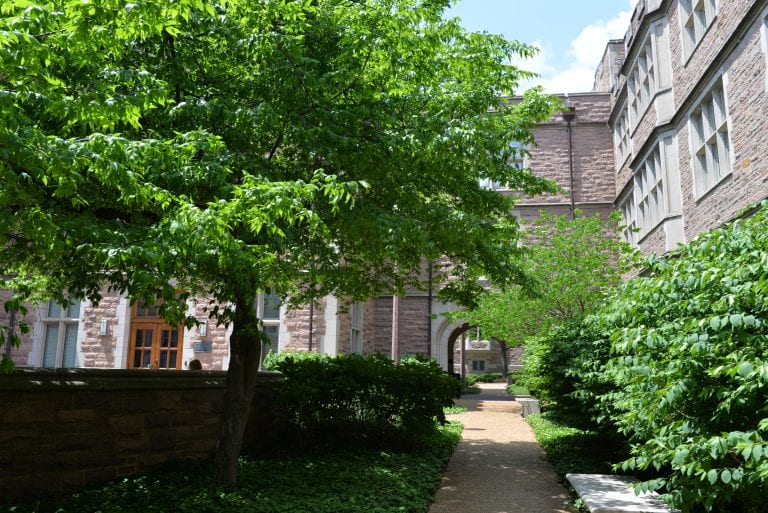
American Hornbeam
Arbor Walk #20, Treekeeper ID #1933
Native to the midwest, the American Hornbeam typically grows as an understory tree, in wetter areas. Its leaf is dark green, ovate, with doubly serrated edges.
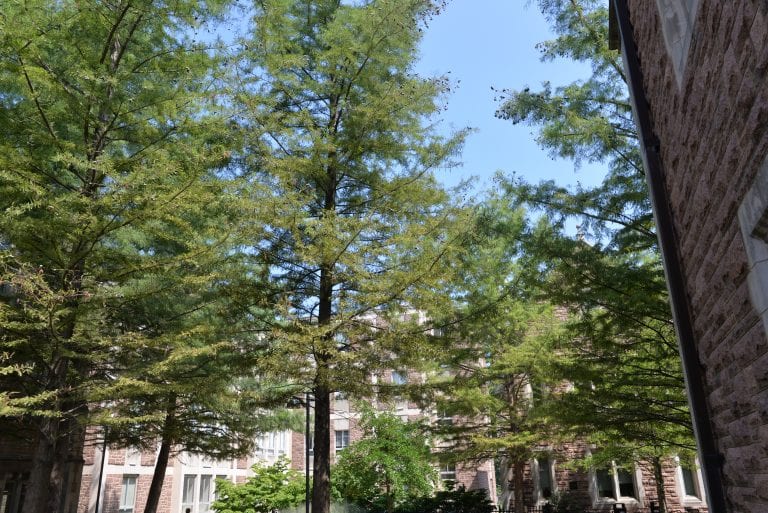
Bald Cypress
Arbor Walk #16, Treekeeper ID #1427
This tree is native to wetlands and swamps in the Midwest but is adaptable to urban conditions. Its needlelike foliage turns russet red and drops in the fall.
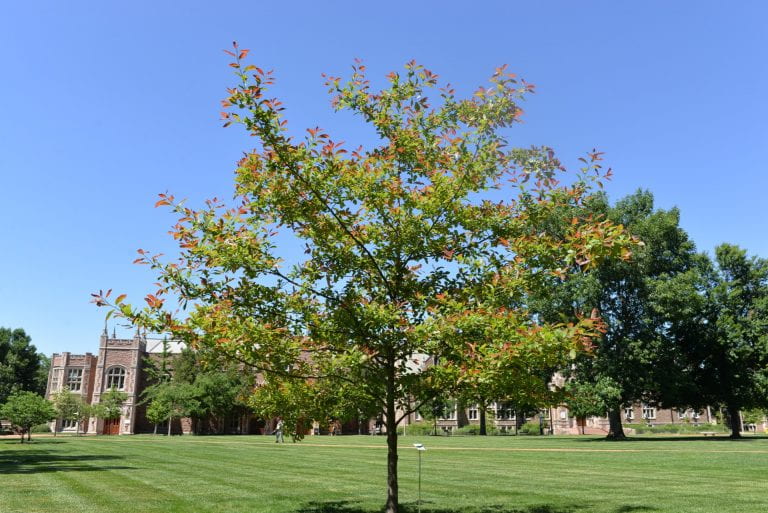
Black Gum
Arbor Walk #32, Treekeeper ID #2247
The Black Gum, also called Tupelo, is a Missouri native and flexible mid-western species capable of growing in both standing water and rocky slopes.
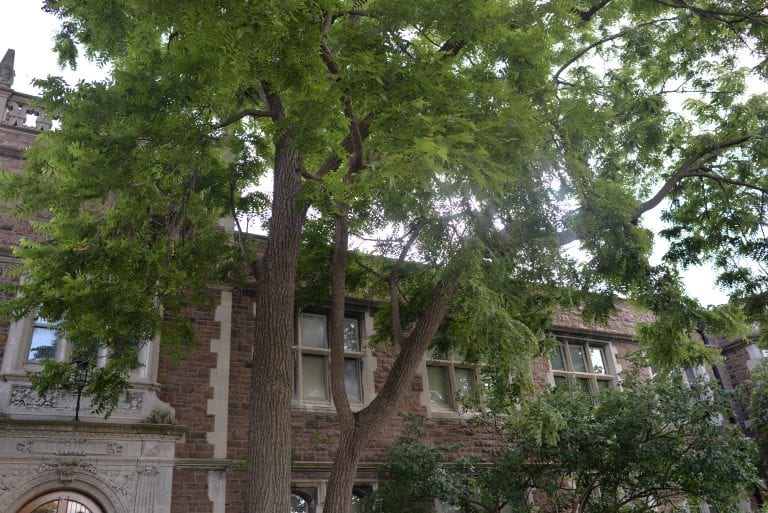
Black Walnut
Arbor Walk #18, Treekeeper ID #1386
This is a large native tree whose wood is used for woodworking in the furniture and cabinet industry.
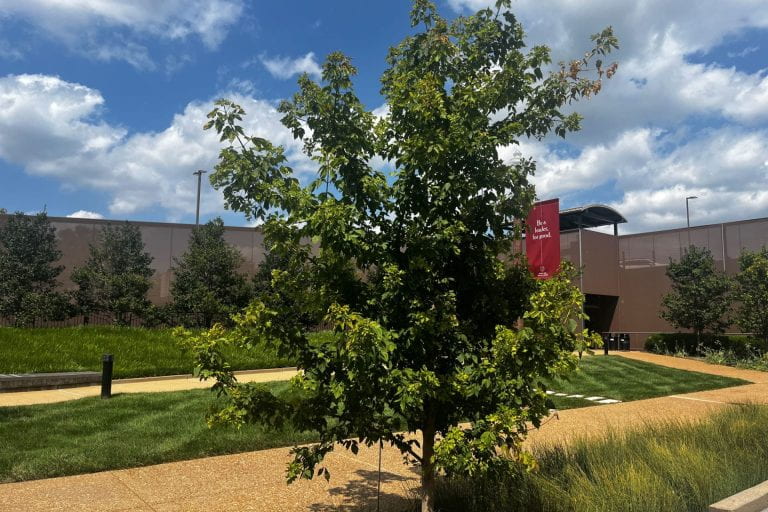
Boxelder Maple
Arbor Walk #118
Boxelder Maple is notable because of the usual leaves this species has compared to all other native maples. Instead of the normal simple leaf, it instead has compound leaves, which means it has leaflets.
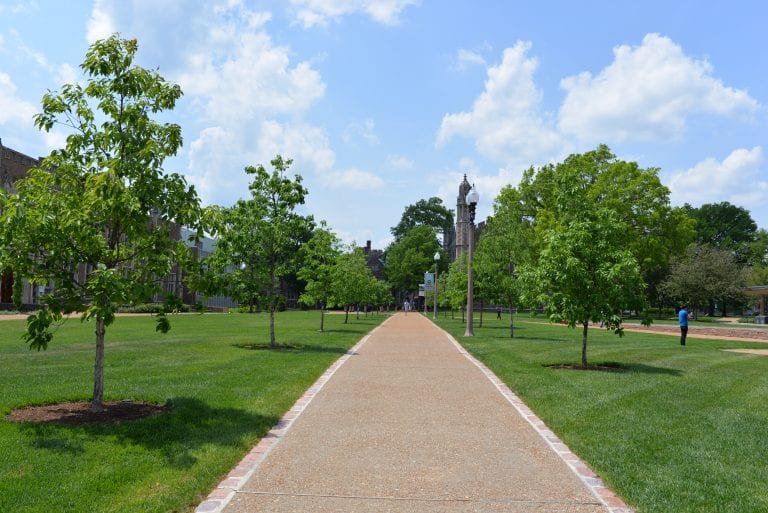
Chinkapin Oak
Arbor Walk #26, Treekeeper ID #1345
Native to the Midwest, the Chinkapin Oak can be easily recognized due to its small, toothed leaves. Unlike most oaks, the Chinkapin has unusually flaky and fissured bark.
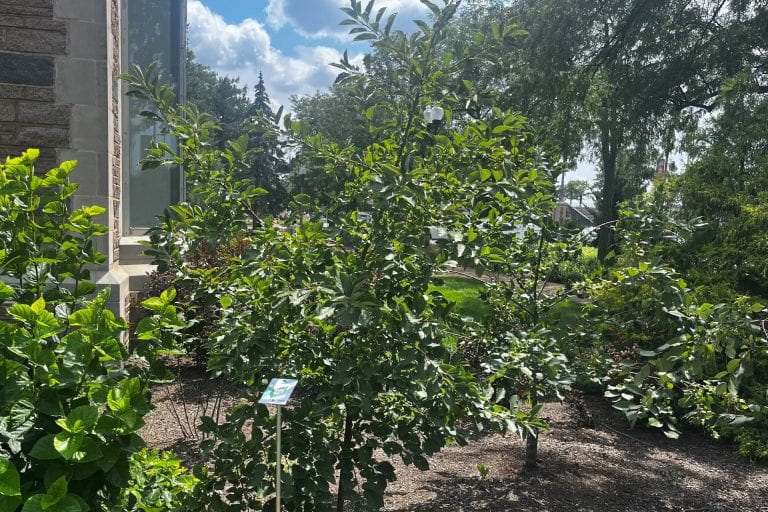
Chokecherry
Arbor Walk #123
The wild Chokecherry is usually found in dense thickets due to its vast root system which can sprout runners, but on campus you will find them managed to prevent this. It blooms beautiful white flowers that eventually turn into dark purple fruit.
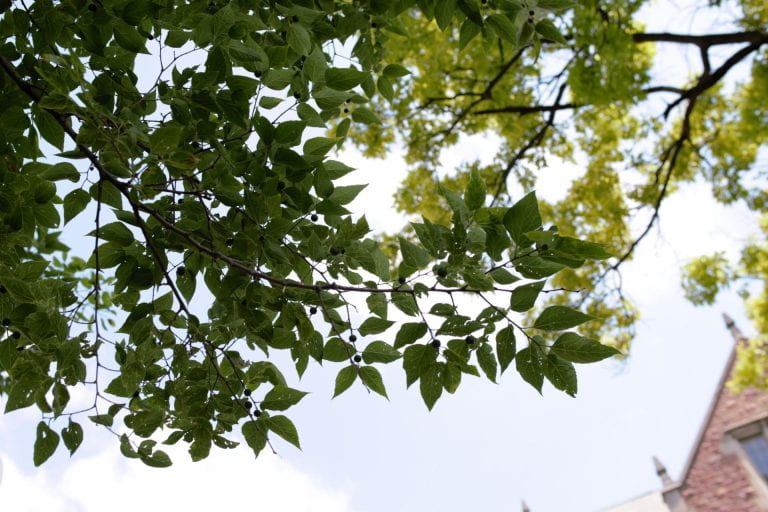
Common Hackberry
Arbor walk #8, Treekeeper ID #1696
This native tree performs well in urban conditions and is easily identified by its distinctive corky bark. But be careful because there are other relatives that are native to Missouri that have very similar bark.
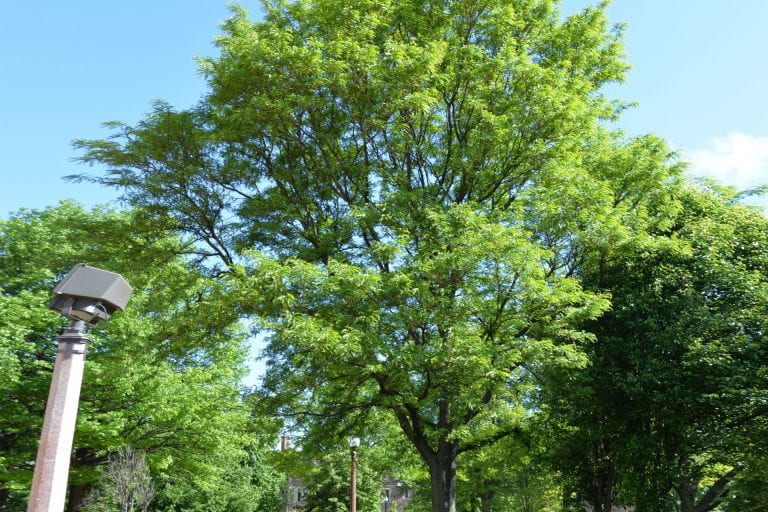
Common Thornless Honeylocust
Arbor walk #28, Treekeeper ID #1610
This is a native plant, but if found in nature, its bark would likely be covered in long, sharp thorns. Arborists tend to plant this natural, thornless variant of the tree to allow people to see its beauty without obtaining injuries.
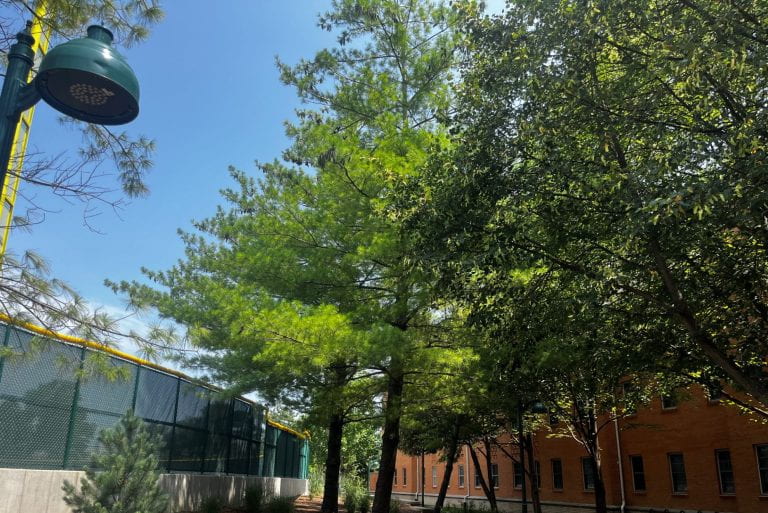
Eastern White Pine
Arbor Walk #134
The Eastern White Pine (Pinus strobus) is considered to be the tallest tree east of the Rocky Mountains, and one of the most historically important. This tree, which ranges from 80' up to 180+' at its record tallest, was the premier tree for timber in North America in the 18th and 19th century. Due to its massive demand in furniture, construction, and farming, stands of this pine were dramatically wiped out by 1900.
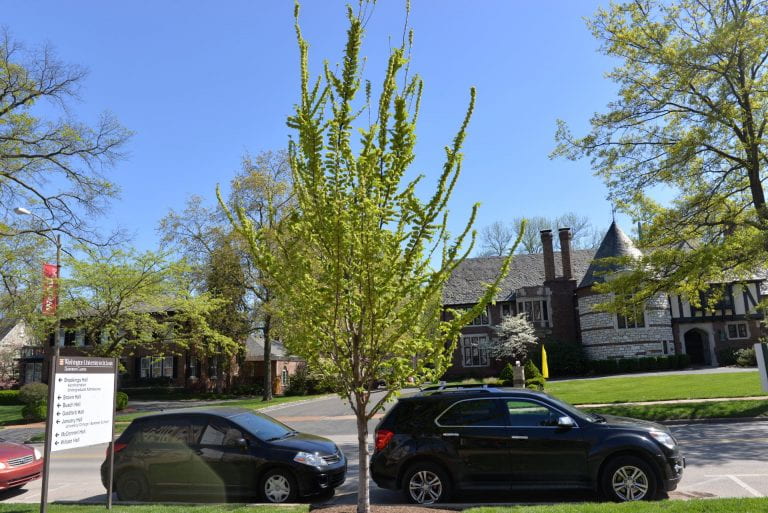
Emerald Sunshine Elm
Arbor walk #52, Treekeeper ID #1676
This Asian hybrid Elm is a relatively small cultivar growing 35 feet high and 25 feet wide. It has glossy green leaves which turn yellow in the fall.
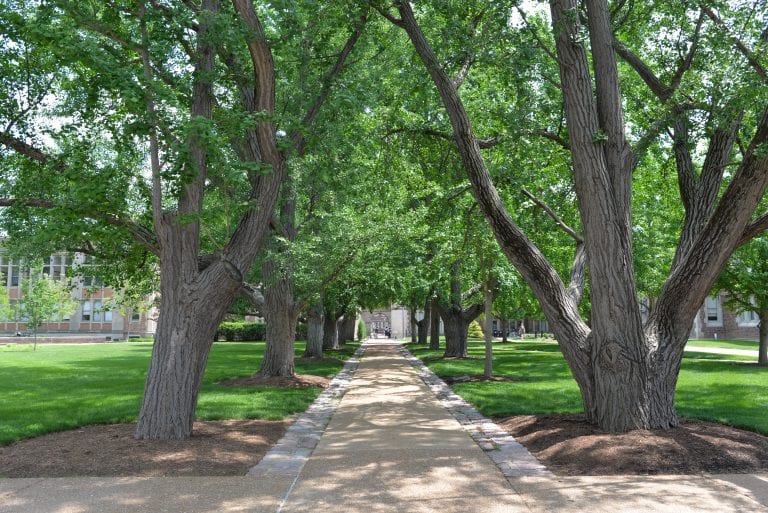
Ginkgo
Arbor walk #12, Treekeeper ID #1649
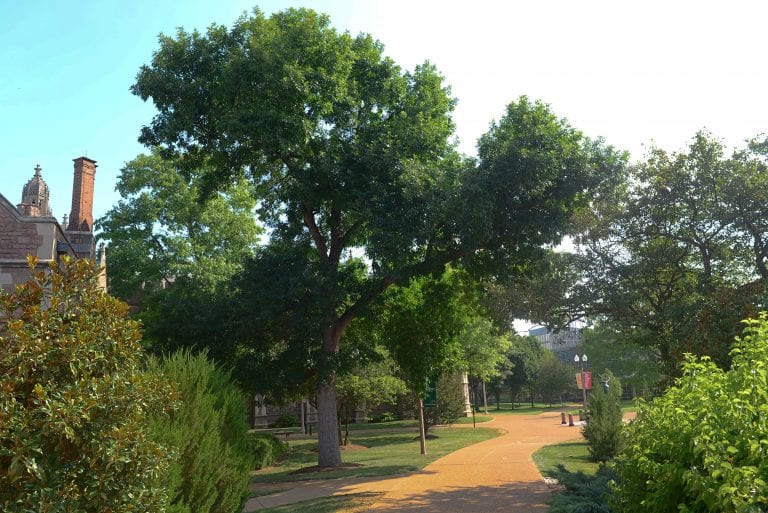
Green Ash
Arbor walk #23, Treekeeper ID #2384
This native tree species is threatened by the Emerald Ash Borer. Since its discovery in 2002, the Borer, a native of Asia, has killed hundreds of millions of ash trees in North America.
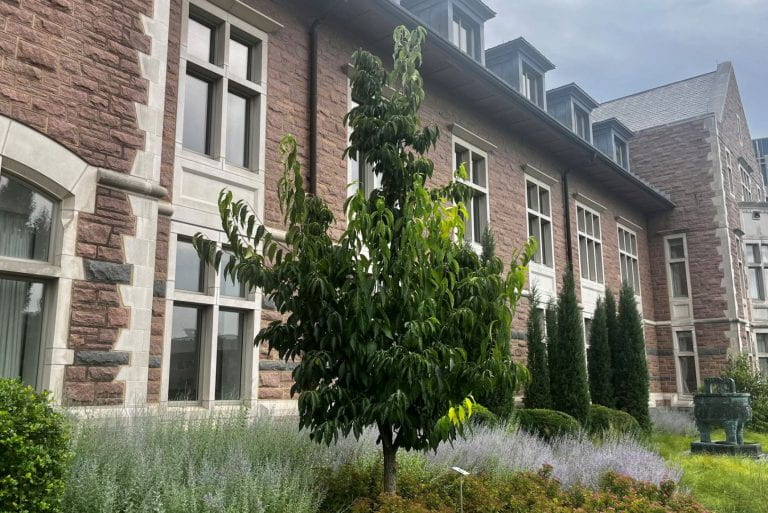
Hardy Rubbertree
Arbor Walk #120
This tree gets its name from the gummy sap contained in the tree's leaves, branches, and bark, which does not pour out like a milkweed but rather pulls apart with sticky strings like half-dried glue. Native to China, this tree has been traditionally used to treat high blood pressure, liver, and kidney issues.
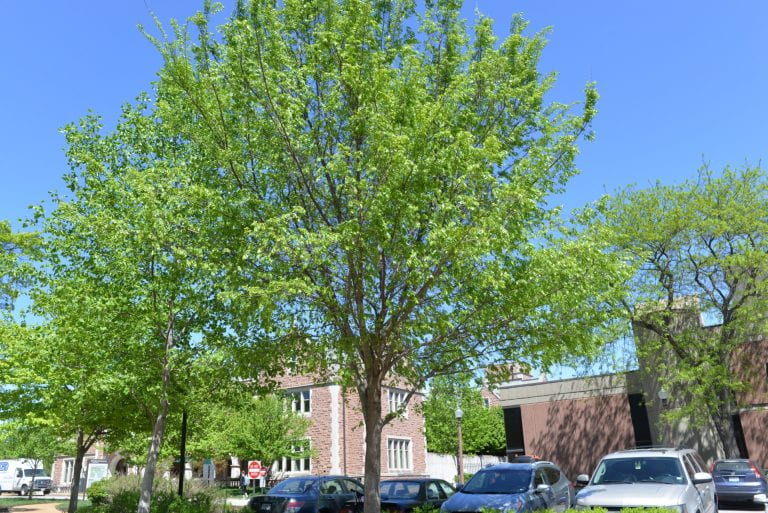
Hybrid Elm
Arbor walk #44, Treekeeper ID #2942
This medium-sized tree is hardy and tolerant to drought, heat, and poor soil which make it well suited as a replacement for the many elms used residential landscapes and city streets.
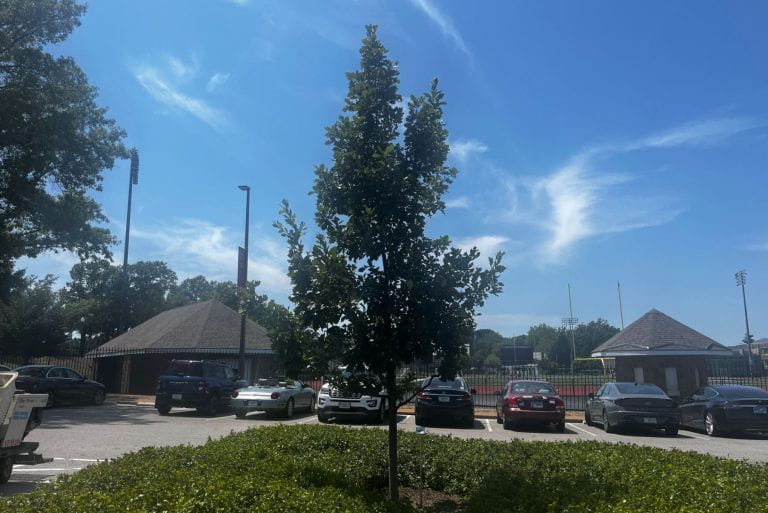
Hybrid Oak
Arbor Walk #125
The Heritage Oak is a hybrid between the English Oak (Quercus robur) and the Bur Oak (Quercus macrocarpa), two similar white oaks from different continents. These closely related species produce a sturdy, fast-growing oak with the large acorns of the Bur Oak and fall colors of the English Oak.
Hybrid Willow
Arbor Walk #117
This willow is a hybrid between the Bay Willow (Salix pentandra) and the Eastern Crack-willow (Salix euxina). It was developed at North Dakota State University and is known for its rounded shape, vigorous foliage, and its namesake reflective leaves that lend the 'Silver Lake' epithet.
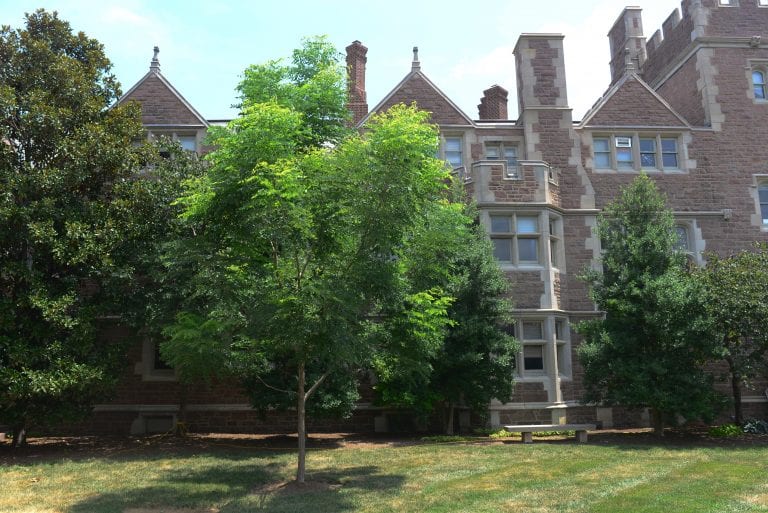
Kentucky Coffeetree
Arbor walk #7, Treekeeper ID #2253
This tree is a "seedless" variety of the native species. It is native to Missouri and the Midwest. Early settlers of Kentucky used the tree's seeds as a coffee substitute, hence its common name.
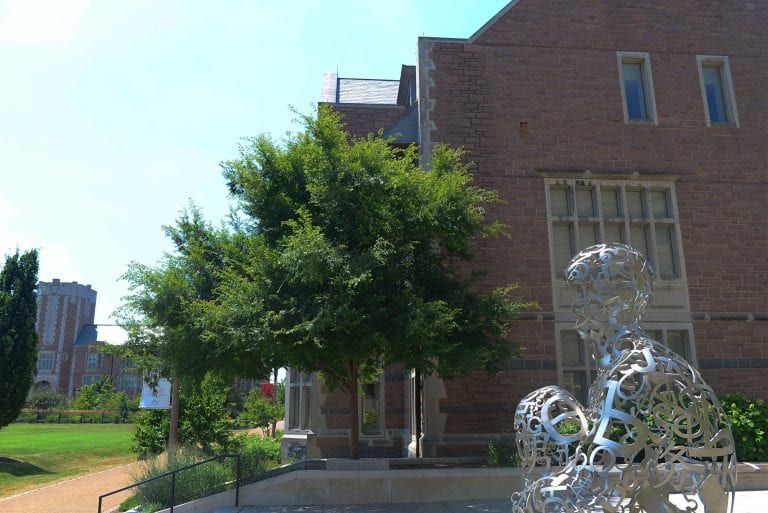
Lacebark Elm
Arbor walk #5, Treekeeper ID #3495
The Lacebark Elm is a large elm native to China that is known for its intricate bark and durable wood. It has strong resistance to the deadly Dutch Elm Disease, making it an ideal planting or hybridization target.
Loblolly Pine
Arbor Walk #126
The Loblolly Pine is an iconic tree in the Southeastern United States, dominating the southern pine forests and being grown for lumber in plantations in the region. It is tall, skinny in shape, and a vigorous grower.
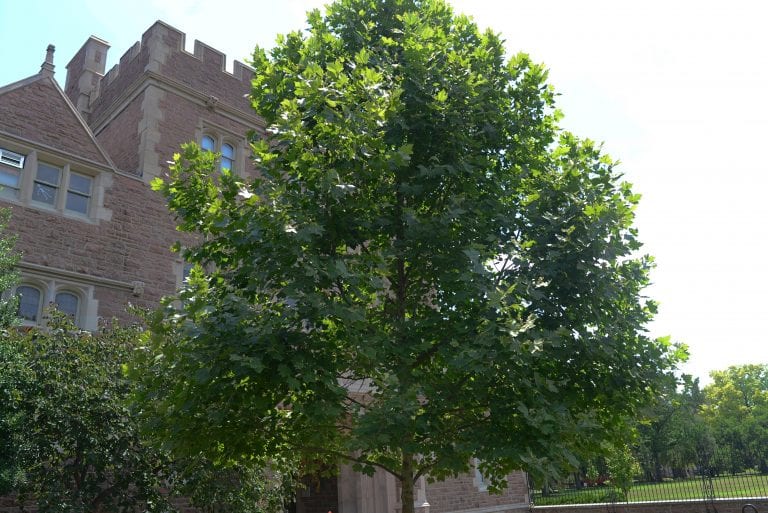
London Planetree
Arbor walk #6, Treekeeper ID #2200
The London Planetree is a hybrid of the Oriental Plane (Platanus orientalis) and American Sycamore (Platanus occidentalis), combining improved disease resistance with cold tolerance. The London Planetree is also extremely tolerant of pollution, and is even found to be an effective removal agent of air pollution particles.
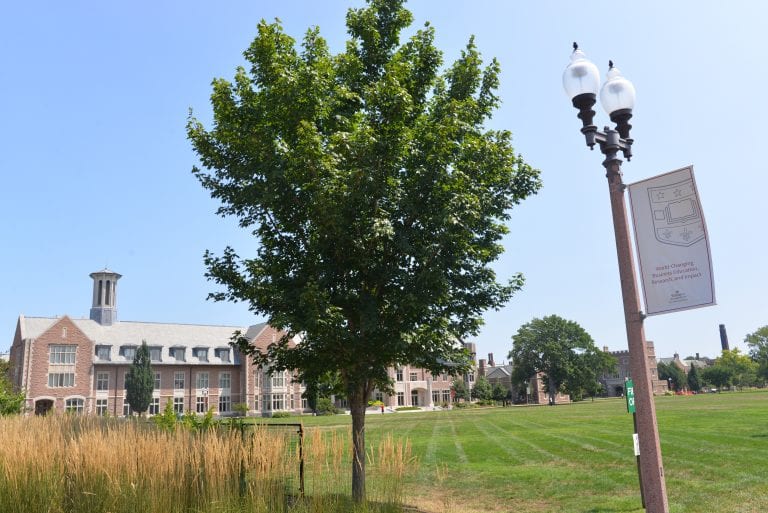
Miyabe Maple
Arbor walk #2, TreeKeeper ID #3153
This tree is native to Japan, although it has become endangered within its own native range. This cultivar was introduced at the Morton Arboretum in Illinois.
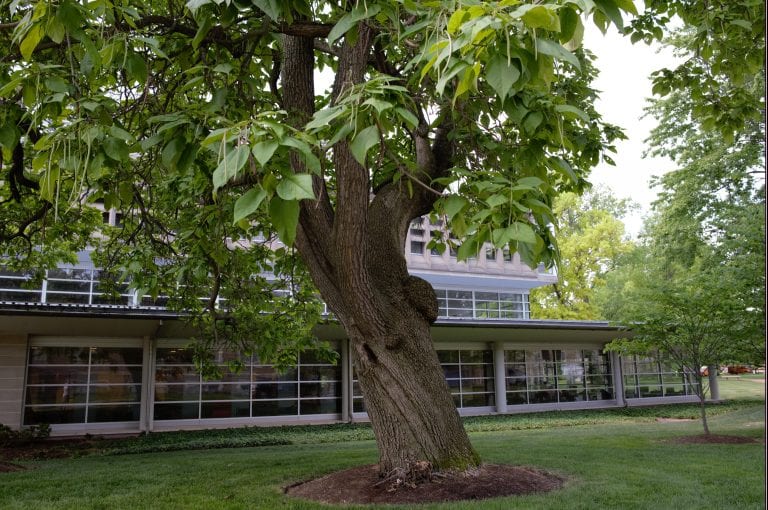
Northern Catalpa
Arbor walk #10, TreeKeeper ID #1794
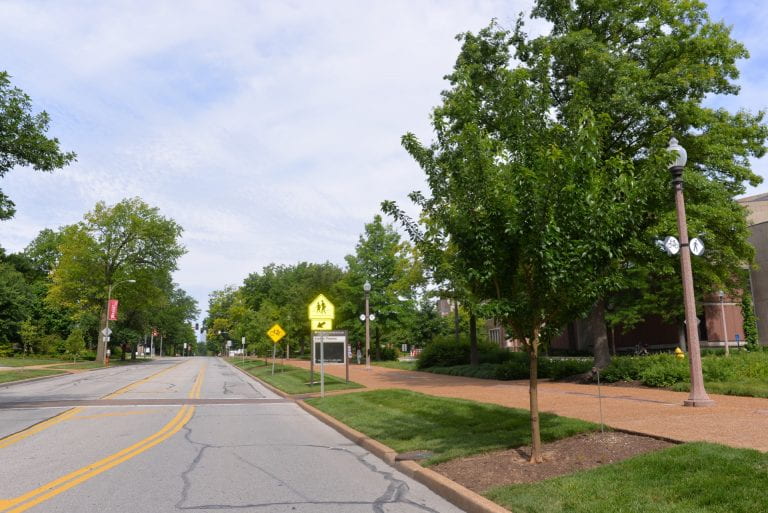
Osage Orange
Arbor walk #45, TreeKeeper ID #2621
This medium-sized tree has a short trunk and rounded crown. it produces large fruit (8-15 cm in diameter) which is roughly spherical, bumpy, and turns bright yellow-green in the fall.
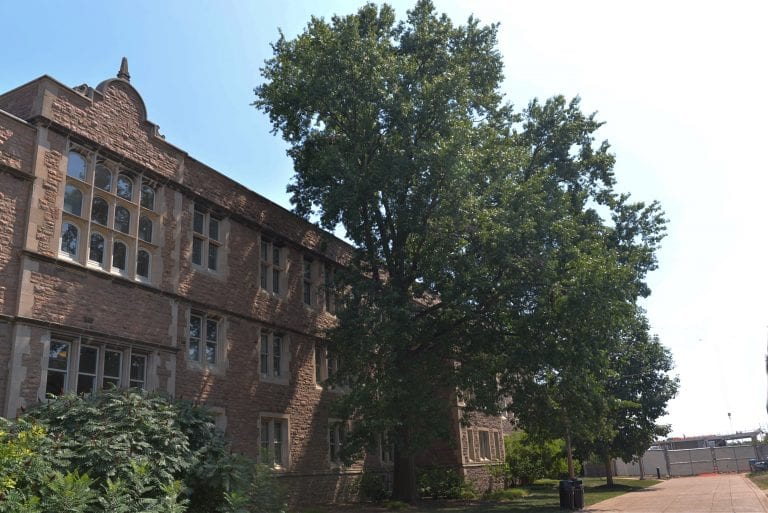
Pin Oak
Arbor walk #19, TreeKeeper ID #1810
The pin oak is a popular tree that is planted because of its quick growth and the dense shade it provides. It has a distinct form that is pyramidal during early maturity but turns more oval later in life.
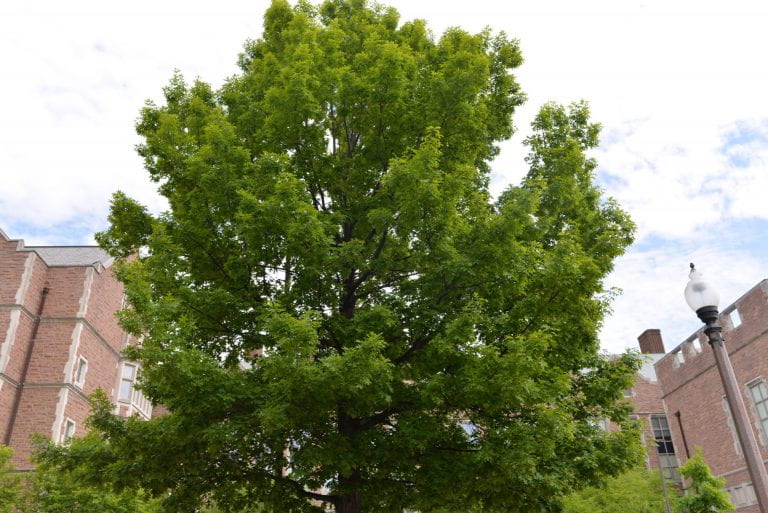
Scarlet Oak
Arbor walk #49, TreeKeeper ID #1925
Often used as a shade tree in lawns and along streets because it grows to a large size. It is native to southeastern Missouri.
Shellbark Hickory
Arbor Walk #114
The Shellbark Hickory is a member of Juglandaceae (Walnut family) that actually produces larger edible nuts than its sister species, the Pecan.
Southern Catalpa
Arbor Walk #115
The Southern Catalpa is a smaller relative of the Northern Catalpa, keeping the large cordate leaves and long seed capsules, but with more vivid flowers and unpleasant-smelling leaves.
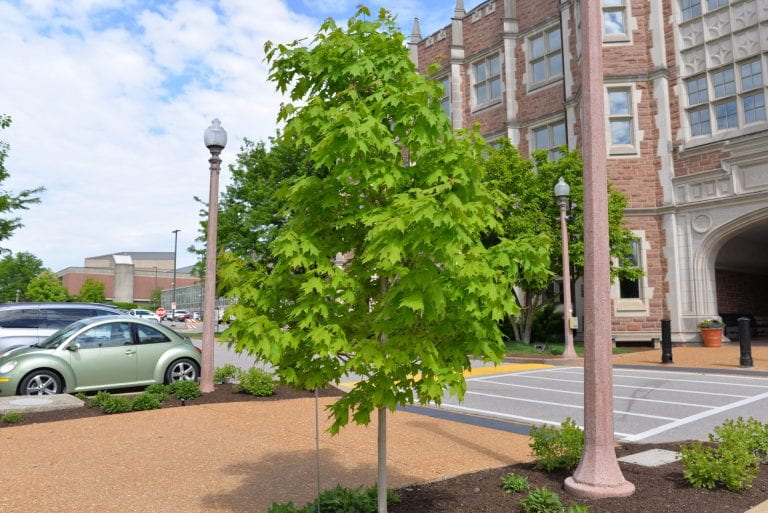
Sugar Maple
Arbor Walk #46, Treekeeper ID #2067
This iconic tree is native to much of Eastern North America, where it is a dominant component of hardwood forests from Canada to Missouri.
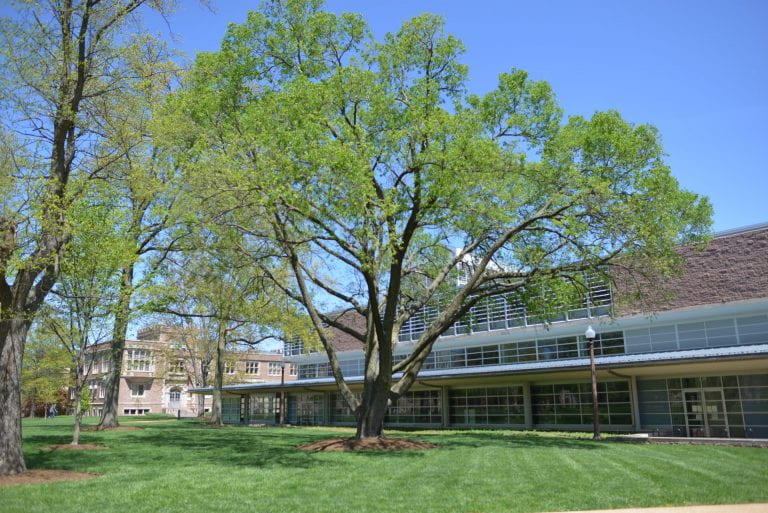
Sugarberry
Arbor Walk #29, Treekeeper ID #1658
This lovely mature tree has shaded the west side of Olin Library for generations of students but sadly came down in a storm in July 2023. The Sugarberry is known for its distinctive corky bark and edible berries.
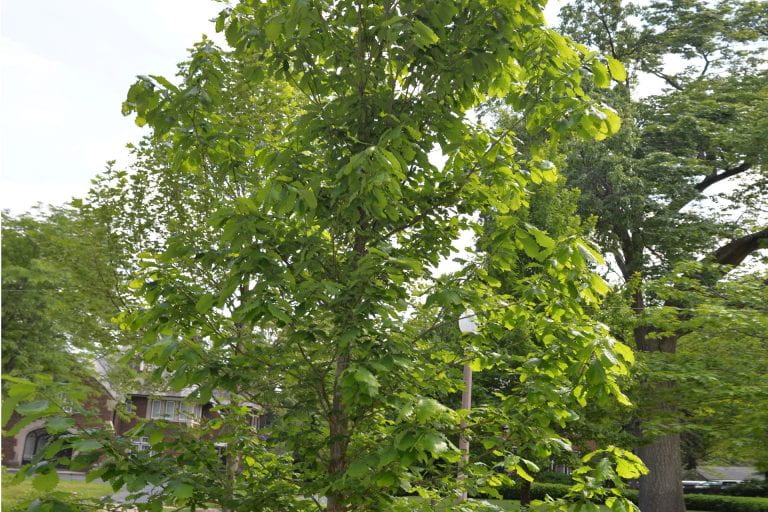
Swamp Chestnut Oak
Arbor walk #55, Treekeeper ID #7212
This shade tree is a Missouri native to floodplains. It produces acorns that, unlike most, can be eaten straight from the tree without needing to be boiled.
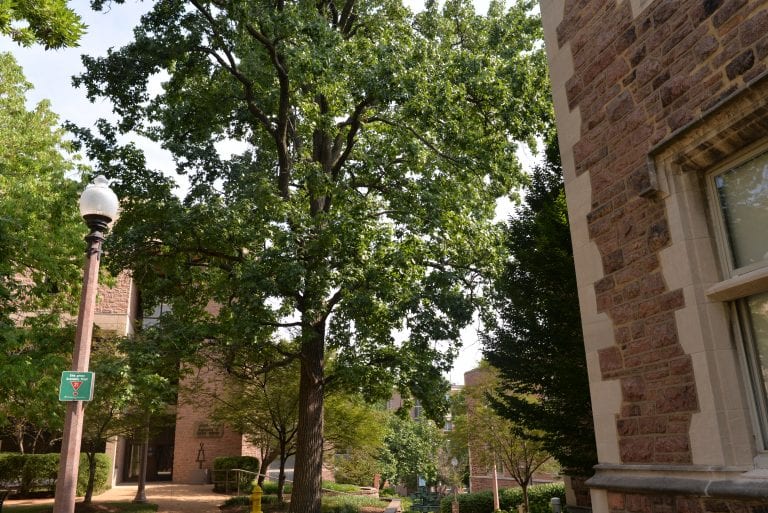
Sweetgum
Arbor Walk #15, Treekeeper ID #1439
This tree's star shaped leaves provide great fall color. Its fruits are the spiky "gum balls" which can hang on the tree all winter.
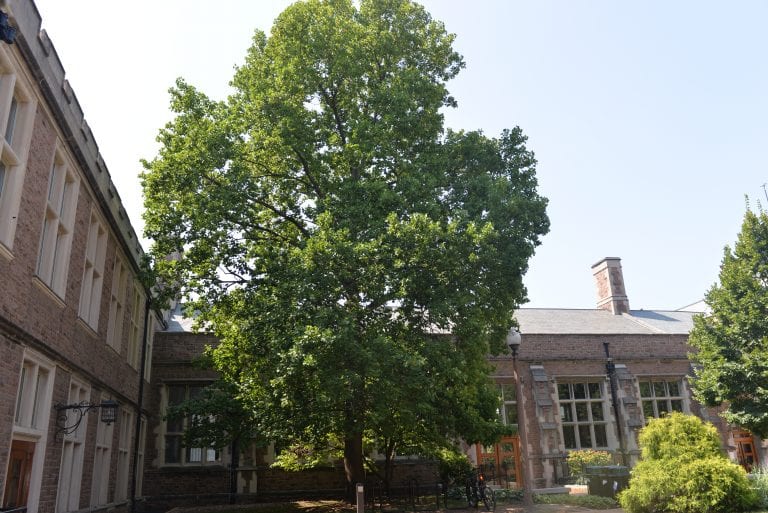
Tulip Poplar
Arbor Walk #13, Treekeeper ID #1888
This native tree’s common name comes from its flower that is shaped like a tulip. In 1991, WU was given this tree as a seedling. It was grown from seed taken from the original Tulip Trees planted by George Washington in 1785 at his Mount Vernon home.
Turkish Filbert
Arbor Walk #127
While not produced commercially, the Turkish Filbert produces edible nuts that can be eaten after roasting, and provides a dependable urban-tolerant shade tree.
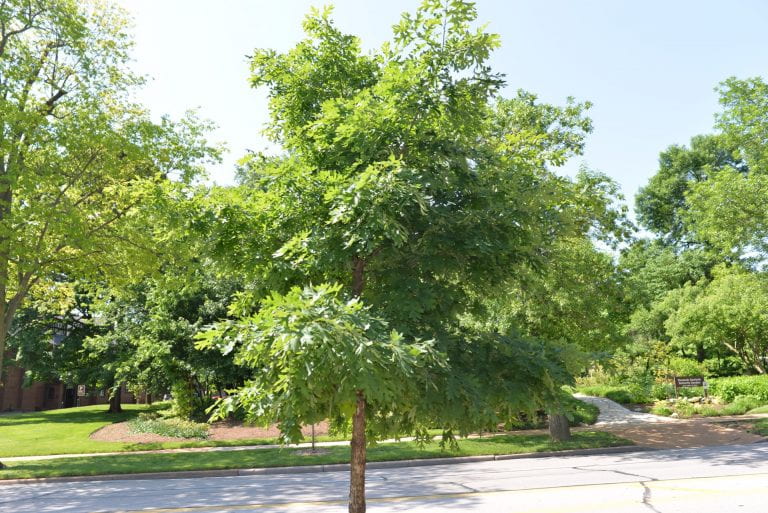
White Oak
Arbor Walk #43, Treekeeper ID #2690
The White Oak is one of the most ubiquitous trees in all of the eastern United States. The White Oak is the state tree of Illinois, Connecticut, and Maryland, and numerous trees along the East Coast have stood in towns or cities since before European occupation.
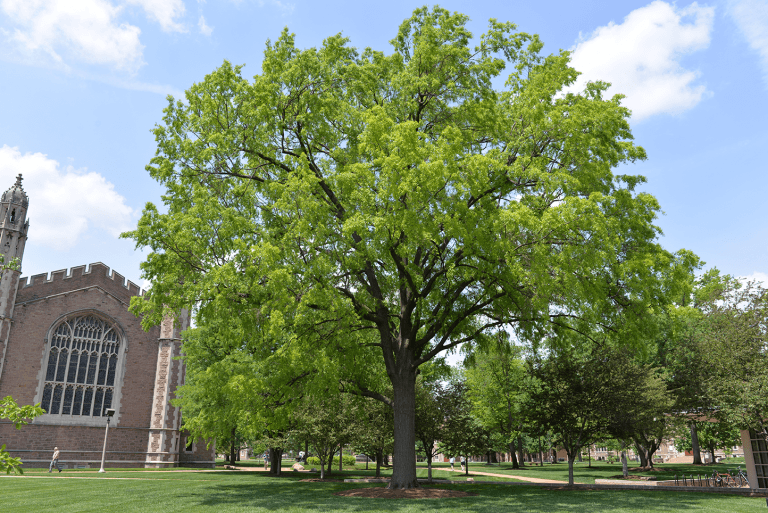
Willow Oak
Arbor Walk #22, Treekeeper ID #1513
This large native tree has a simple, small leaf, and a finer texture than most oak trees. It is considered a medium to large oak, can grow over 100 feet tall, and is native to the Southeastern portion of the United States, including Missouri.